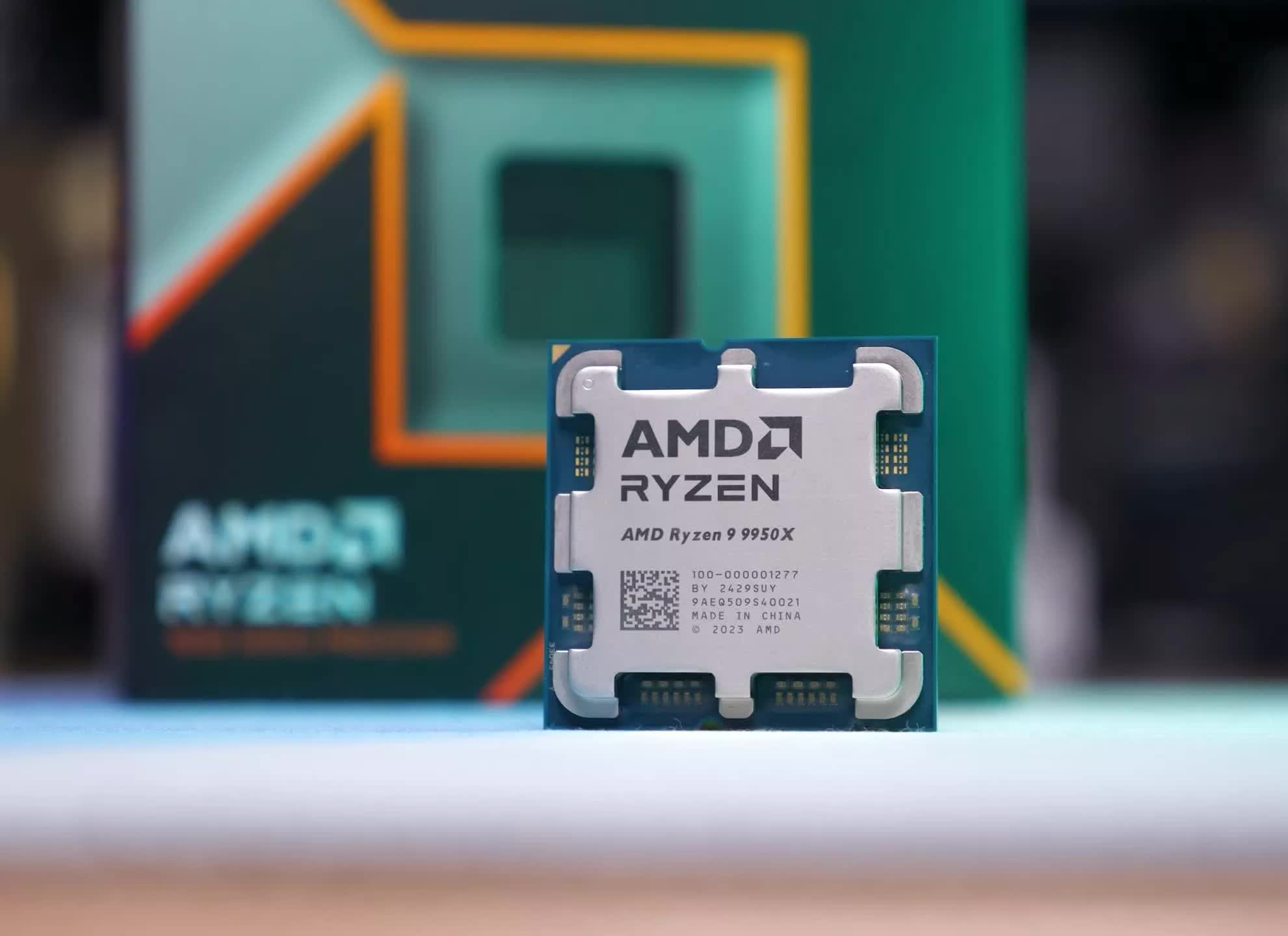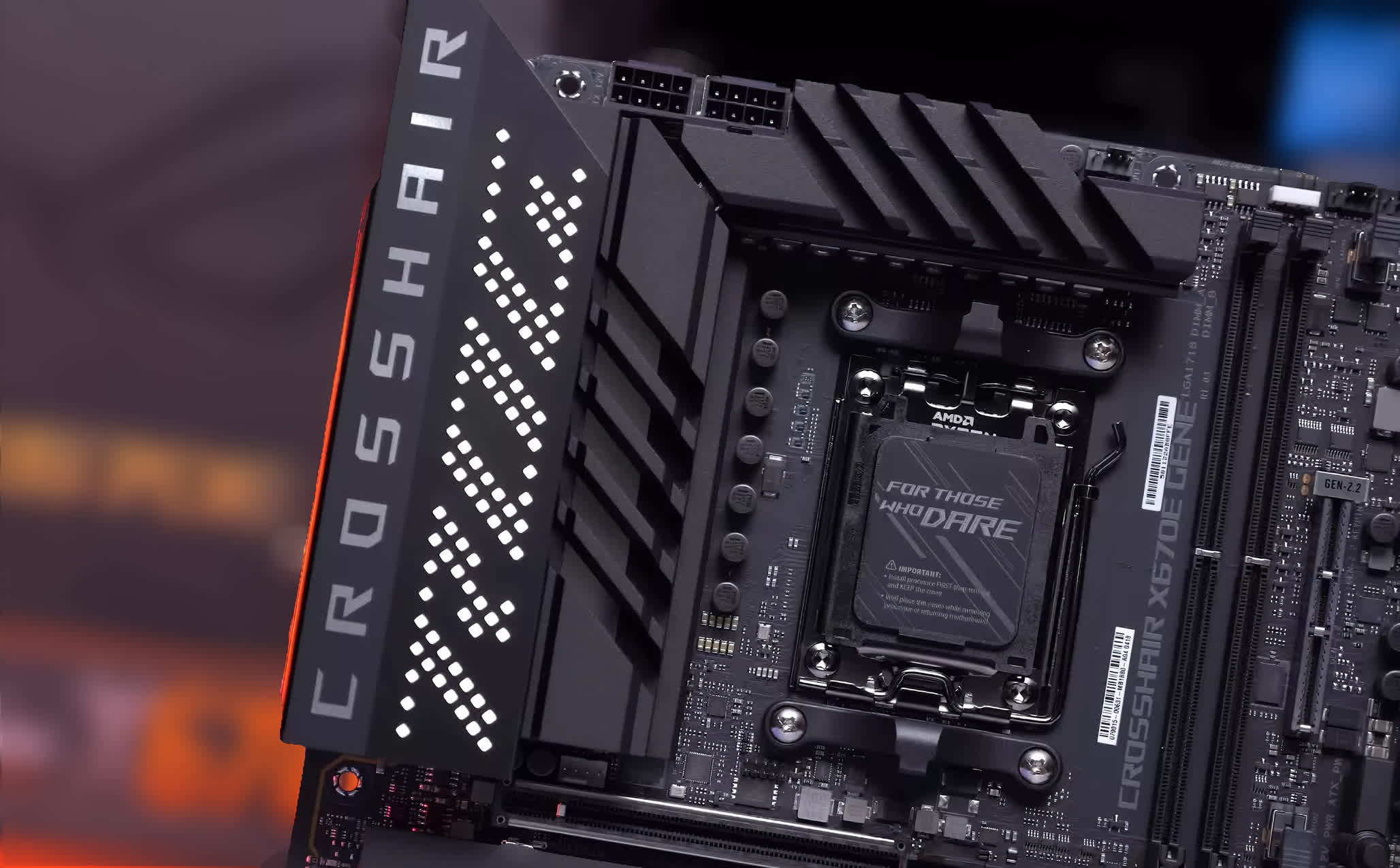In brief: PC builders upgrading to AMD's next-gen 800-series chipsets and Ryzen 9000 processors may face higher motherboard costs. If a recent leak proves accurate, as shared on X by momomo_us, projected European retail prices for several upcoming Asus X870 and X870E motherboard models will be higher than for the current generation.

After converting the listed Euro amounts to US dollars based on current exchange rates, the pricing shows a significant increase over Asus' existing X670 motherboard lineup.
For example, the high-end Asus ROG Crosshair X670E Hero, which launched at around $650, now has its X870E successor listed at €704.52, which translates to $781.50. Other models are also seeing substantial price hikes.
Of course, leaked pricing is always subject to change, and regional taxes or premiums may be inflating the listed amounts. It's also possible that these prices are merely placeholders and don't reflect finalized MSRPs. Still, the leak gives enthusiasts a preliminary look at the potential costs associated with upgrading to AMD's upcoming platform.
ROG STRIX X870-A GAMING WIFI - €455.40
– 188å· (@momomo_us) September 7, 2024
ROG STRIX X870-F GAMING WIFI - €489.90
PRIME X870-P WIFI - €328.44
ROG CROSSHAIR X870E HERO - €704.52
ProArt X870E-CREATOR WIFI - €547.20
PRIME X870-P - €314.16
X870 A ELITE WF7 ICE - €353.85
Fortunately, while these next-gen motherboards may be more expensive, the chips they support are not. The Ryzen 9000 desktop CPUs have launched at slightly lower prices than the Ryzen 7000 series. For instance, the flagship Ryzen 9 9950X is priced at $699, which is $50 less than the Ryzen 9 7950X was at launch two years ago.
If a price hike does go through, some of it could be offset by cheaper processors.

We'll find out soon enough how accurate this leak is, as rumors suggest a late September debut for the new chipsets.
The leap from X600 to X800 chipsets brings several upgrades. X870 motherboards introduce support for faster 40Gbps USB 4.0 connections across the board. They also eliminate a previous bottleneck by offering simultaneous PCIe 5.0 bandwidth for both high-speed NVMe SSDs and graphics cards, a feature that was previously exclusive to the more expensive "Extreme" chipset tiers.
As for GPUs, while models supporting PCIe 5.0 haven't yet appeared, upcoming lineups like AMD's RDNA 4, Nvidia's RTX 5000 Blackwell, and Intel's Battlemage are expected to include the feature. All three manufacturers are on track to launch their new GPUs in late 2024 or early 2025.
Expensive AMD X870 motherboards could offset more affordable Ryzen 9000 CPUs